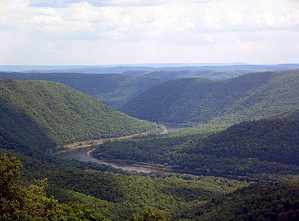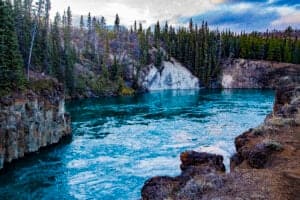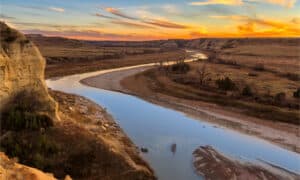California’s hot, rather dry climate makes it an ideal home to a wide range of native and non-native snake species. However, some of California’s snakes prefer to live in wetter environments like its rivers and waterways. Although the Golden State has historically lacked native water snake species, several varieties of invasive, water-dwelling serpents have begun to take over in more recent years. Below, we’ll take an in-depth look at some of the most snake-infested rivers in California and the types of snakes you might expect to see if you visit them.
Water Snakes Found in California Rivers
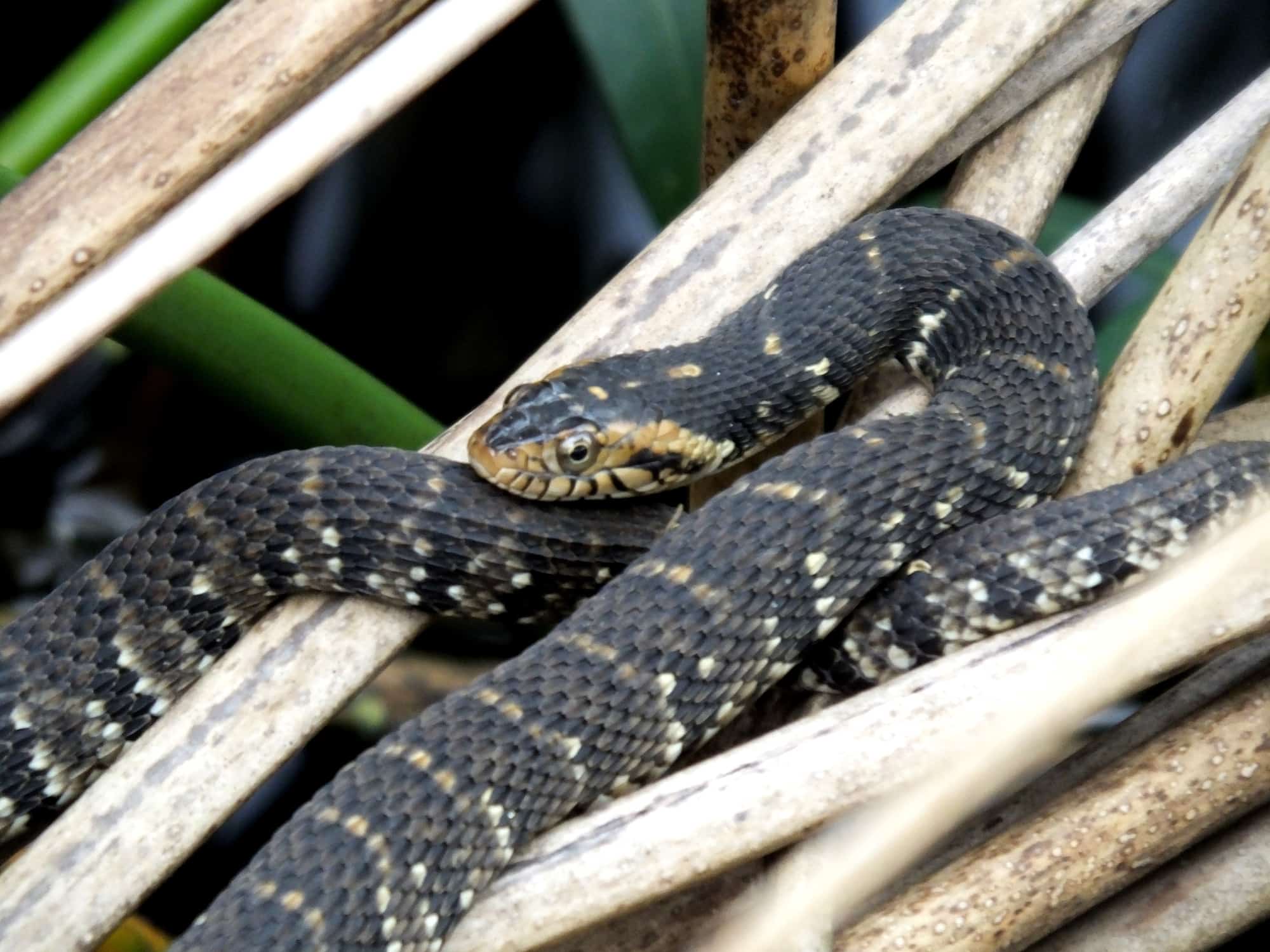
The banded water snake is one of California’s most abundant invasive snakes.
©iStock.com/passion4nature
For much of its history, California has notably lacked water snakes. Specifically, water snakes are any one of around 10 species (and numerous additional subspecies) of highly aquatic snakes within the Nerodia genus. These large, heavy-bodied serpents are, as you would imagine, excellent swimmers and skilled hunters that feed upon various species of small fish, amphibians, insects, and even rodents that may cross their path.
Although water snakes are non-venomous and generally non-aggressive, they will not hesitate to bite if handled (or perhaps stepped on by an unsuspecting hiker or swimmer). They are also capable of releasing a foul-smelling musk from their cloacae to deter predators.
In general, California has long been devoid of water snake species. However, in more recent years, several non-native species have been introduced to the area and are now considered invasive. According to the Water Education Foundation, these species threaten native snakes like the also highly-aquatic and harmless garter snake by out-competing them for food and other resources.
Some of the state’s most abundant invasive water snakes include the common or northern water snake, the banded or southern water snake, and the diamondback water snake. Many of these species were unfortunately introduced to the area by irresponsible pet owners abandoning their snakes in the wild.
Fortunately, as of 2008, it is illegal to own any Nerodia species in California, and the state’s government has taken several measures to control non-native watersnake populations and protect its native species.
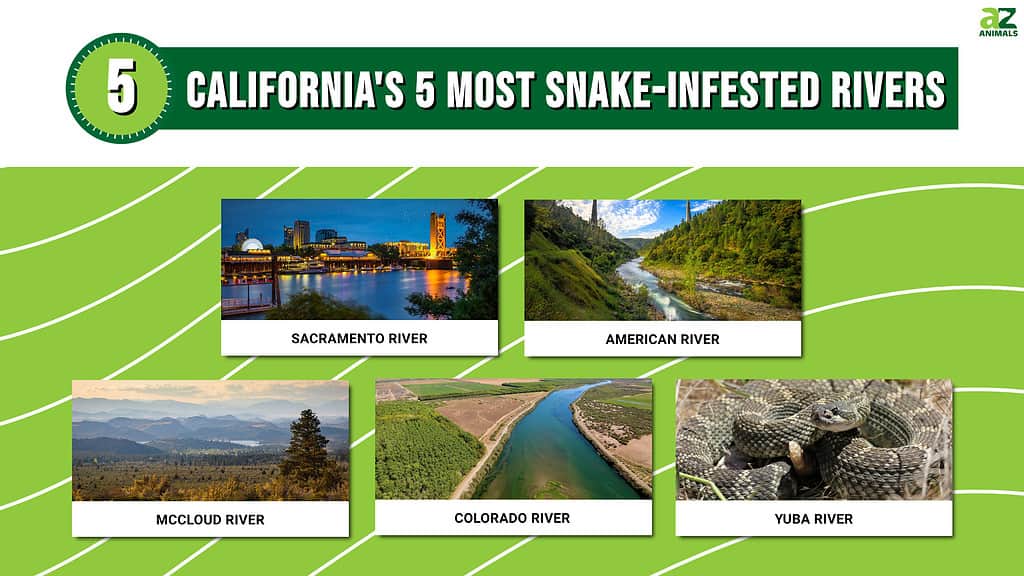
5 Most Snake-Infested Rivers in California
While many of California’s rivers, lakes, and other waterways have healthy populations of harmless species like garter snakes, many of them also are host to non-native water snakes and are also frequented by less aquatic, venomous native species like rattlesnakes. Below are five of California’s most snake-infested rivers.
1. Sacramento River

The Sacramento River is California’s second-longest river at over 400 miles.
©iStock.com/miroslav_1
The second-longest river in California, the Sacramento River, is the ideal stomping ground (or perhaps slithering ground) for numerous snake species, both aquatic and non-aquatic. It is northern California’s main river, extending for over 400 miles from the Klamath Mountains down to the San Francisco Bay.
The California Department of Fish and Wildlife describes several invasive water snake species that have established themselves in and along the river, most notably the southern water snake, also known as the banded water snake. Like most water snake species, it is non-venomous and generally non-aggressive. However, it will spray its nasty-smelling musk and feces at anyone who ventures too close for comfort.
In addition to water snakes, several types of native rattlesnakes are also commonly spotted near the Sacramento River. News reports note that rising temperatures in the spring and summer months tend to bring out rattlesnakes in the area as they bask along rocky cliffs and outcrops along the river.
Though they are mostly non-aquatic, rattlesnakes like the native Northern Pacific rattlesnake will occasionally take to the water to avoid predators or hunt tasty prey like salamanders and frogs. Despite generally avoiding water, they are excellent and speedy swimmers. However, they are also non-aggressive and don’t seek out humans to attack or bite them.
2. American River
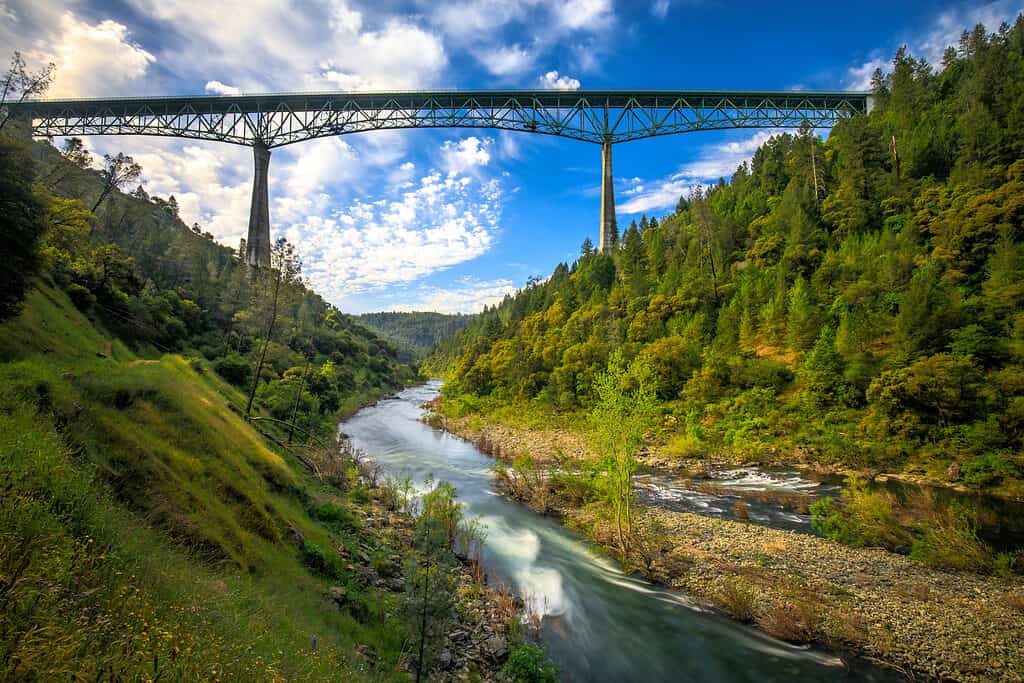
Rattlesnakes are especially common along California’s American River.
©James Sakaguchi/Shutterstock.com
Despite being one of California’s smaller rivers at just around 30 miles in total length, the American River provides the perfect conditions for native and non-native snake species alike to thrive. It isn’t uncommon for travelers to spot rattlesnakes swimming or basking along this northern California waterway. The American River Parkway’s official website even has a guide for navigating rattlesnake encounters in the area.
The American River emerges from the Sierra Nevada mountains and runs southwest towards its eventual confluence with the aforementioned Sacramento River. Historically, it was the catalyst for the California Gold Rush in the mid-1800s after settlers discovered gold at Sutter’s Mill, a sawmill along the Sierra Nevada’s foothills.
Aside from the many native rattlesnake species frequenting the American River’s banks, more aquatic, non-native varieties like the northern and southern water snakes are also now fairly common. During the warm spring and summer months, these species are especially active, along with the rattlesnakes above.
3. McCloud River
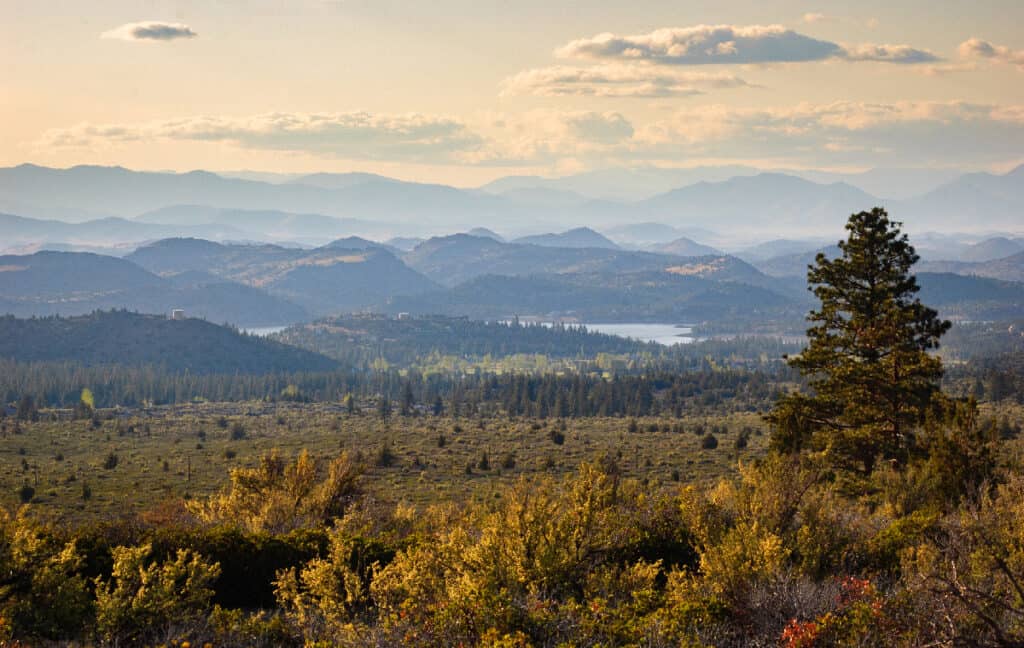
The McCloud River runs through California’s largest national forest, the Shasta-Trinity.
©Zack Frank/Shutterstock.com
Up next on California’s most snake-infested rivers is the McCloud River in northern California. This 77-mile river rests just east of and flows parallel to the much longer Sacramento River. But despite being much smaller than the Sacramento River, it’s just as ideal for both native and non-native snakes alike to swim about in search of prey.
The McCloud River hosts several campgrounds along its banks and is a popular fishing and swimming spot in northern California. However, it’s pretty common for fishers, hikers, and other travelers to encounter venomous rattlesnakes as well as invasive water snakes along this California waterway. The most common rattlesnake in the area is the native Northern Pacific species. Several harmless species also reside along the McCloud River, including many varieties of garter snakes and the rubber boa.
Notably, the McCloud also flows through the Shasta-Trinity National Forest. As the largest national forest in California, Shasta-Trinity covers more than 2 million acres. It also contains five wilderness areas, around 6,000 miles of rivers and streams, and Shasta Lake, California’s largest man-made lake.
4. Colorado River
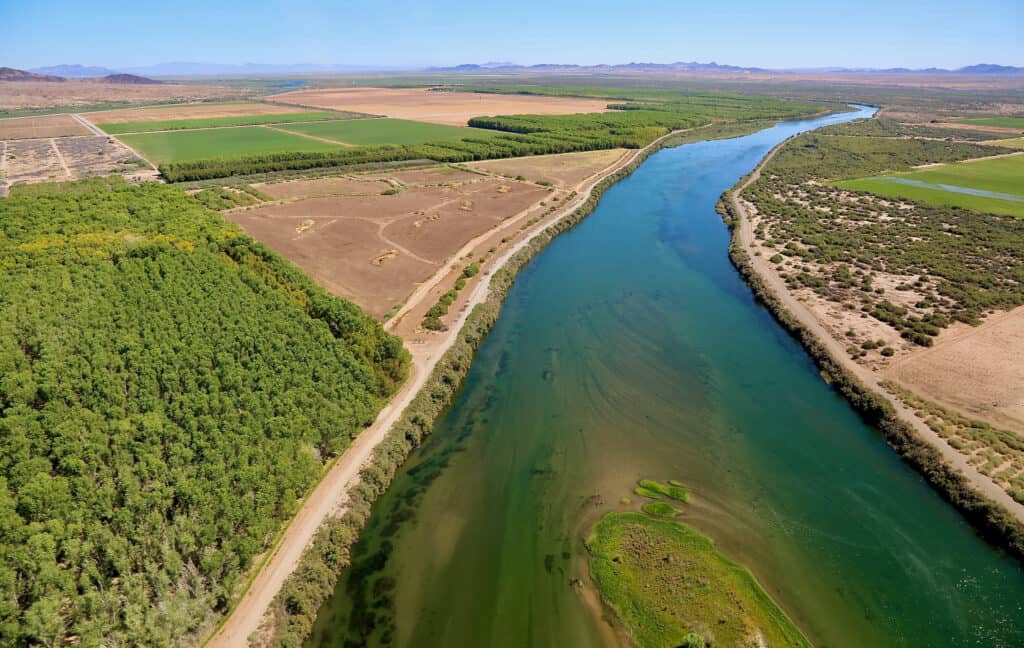
The Colorado River is California’s longest river.
©iStock.com/Chris Szwedo
At over 1,400 miles long, the Colorado River is one of the American Southwest’s principal rivers. Its drainage basin covers seven US states as well as two Mexican states. Unfortunately, invasive water snakes have also managed to colonize this California waterway, with the southern banded water snake being one of the chief offenders according to local news sources.
Running from northern Colorado’s Rocky Mountain range southwest down through Utah, Nevada, Arizona, and finally, along California’s southeast border, the Colorado River is also a rich ecosystem home to many native and non-native snakes. While most of the snake species residing along this extensive river are largely harmless to humans, a handful of rattlesnake species can pose a threat to unprepared hikers, fishers, and swimmers.
Perhaps the Colorado River’s most dangerous rattlesnake is the western diamondback rattlesnake. The species is thankfully easily identifiable at a distance thanks to the dark brown diamond-shaped pattern extending down its back and large, triangular head. Due in part to its potent venom, abundance, and large size, it is responsible for the greatest number of snake bites in the United States as well as the bulk of snakebite deaths in northern Mexico.
5. Yuba River
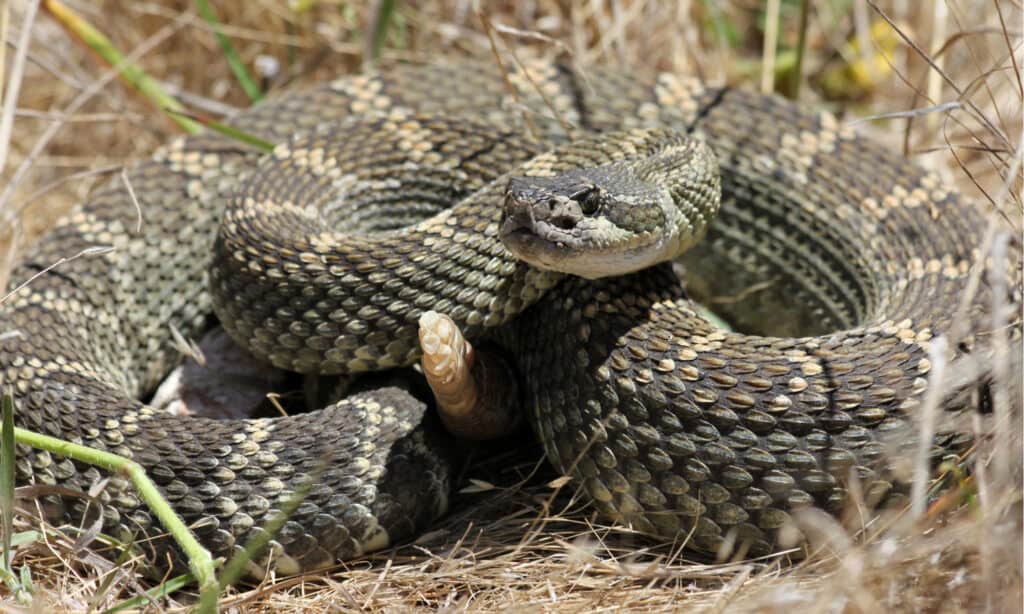
The Northern Pacific rattlesnake is common along the Yuba River.
©Ryan M. Bolton/Shutterstock.com
We’ll cap off our list of California’s most snake-infested rivers with the lesser-known Yuba River near the Sacramento Valley area. Notably, the Yuba is one of the Feather River’s main tributaries, which by extension is the Sacramento River’s principal tributary. The river’s main stem is around 40 miles long, while its entire length is around 100 miles. It officially starts where the Northern Yuba and Middle Yuba Rivers meet near the Sierra Nevada mountain range.
Rattlesnakes are quite common along the Yuba River, with the Northern Pacific variety being the primary species in the area. Invasive water snakes have also become a problem in recent years. The southern banded water snake is especially prevalent, with local wildlife experts being concerned the species will outcompete native garter snakes like the giant garter snake.
The Yuba River gets its name from the indigenous Nisenan word for “waterway,” or “uba seo.” Early records for the area spell the name as Yubu, with it being used to refer to the river itself starting in 1844.
The photo featured at the top of this post is © iStock.com/Chris Szwedo
Thank you for reading! Have some feedback for us? Contact the AZ Animals editorial team.



